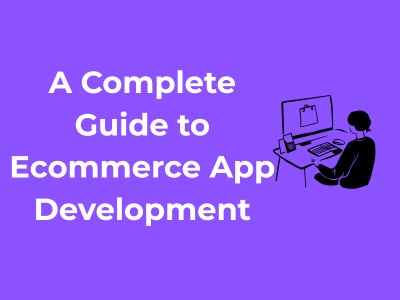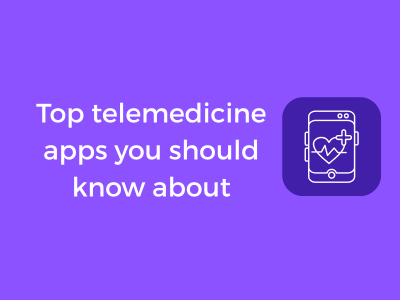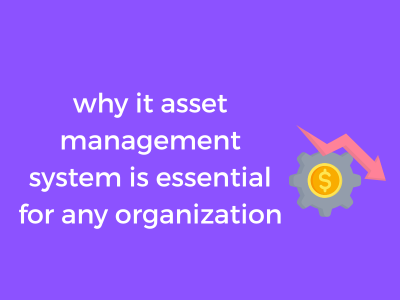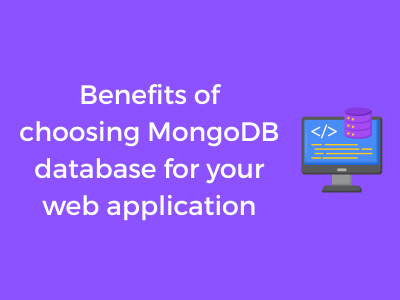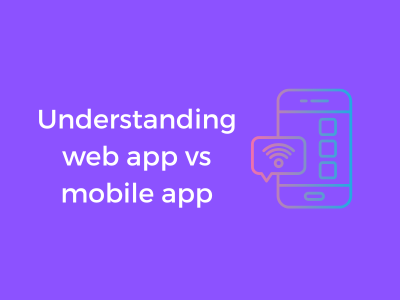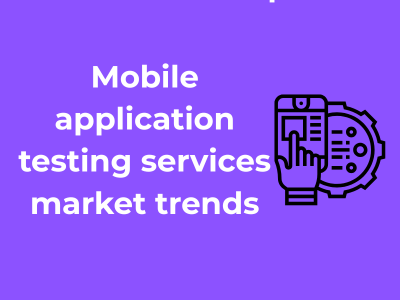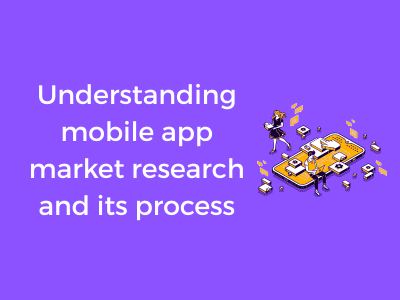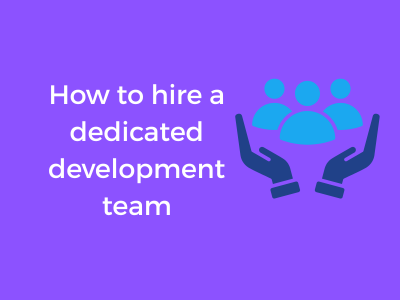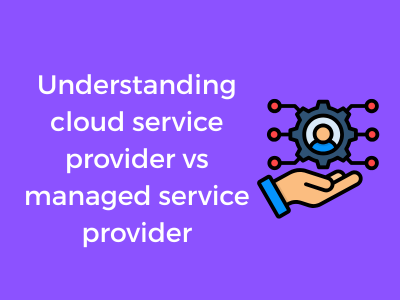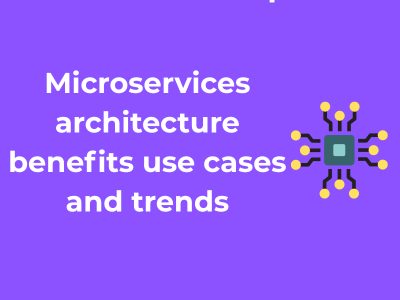Let’s start with the basics — what exactly is ecommerce app development? Well, it’s the backbone of your online marketplace or retail business. Simply put, it’s the process of creating mobile or web applications that allow businesses to sell their products or services online. If you’ve ever shopped for a new tech gadget, a trendy outfit, or even your groceries via an app, then you’ve already experienced the magic of ecommerce app development in action!
Core Features to Include in an Ecommerce App
So, you’ve decided to create an ecommerce app? Great choice! But before you dive into development, let’s talk about the must-have features you need to include. Creating an amazing app or ecommerce website isn’t just about aesthetics; it’s about functionality and user experience too. Get ready to take notes—because these features are non-negotiable for a stellar ecommerce app.
1. User-Friendly Navigation
Your app’s design should feel intuitive right from the landing page. Imagine walking into a store where everything is easy to find. That’s exactly what your digital storefront should offer. Incorporate clear categories, a search bar with auto-suggestions, and filters. This ensures users can find what they’re looking for without frustration. Remember, confused users are just one step away from leaving your app.
2. Smooth Onboarding & Account Management
Nobody likes complicated registration forms, right? Make the sign-up process simple with options like social media logins or single sign-on (SSO). Once signed up, users should have access to an elegant dashboard where they can manage their information, review purchase history, and customize preferences. Happy users = returning customers!
3. Secure Payment Gateways
Payment is crunch time in the shopping journey. Support multiple payment options like credit cards, debit cards, mobile wallets (e.g., Apple Pay, Google Pay), and even options like buy-now-pay-later. And don’t forget about security—integrating a PCI-DSS-compliant payment gateway is crucial. No one wants to risk their money on an insecure platform.
4. Personalized Product Recommendations
Here’s where you can flex a little tech muscle. By harnessing machine learning, you can suggest products based on user behavior, past searches, or purchase history. Personalized recommendations not only feel thoughtful but also increase the likelihood of a purchase. It’s a win-win!
5. Push Notifications (But Use Them Wisely)
Push notifications are one of the most powerful tools to keep your users engaged—but don’t overdo it! Use them to share valuable updates like discounts, price drops, or restocks on a user’s favorite item. Make it personal and timely. A poorly timed notification, however, can feel spammy and annoying.
6. Fast & Accurate Search Functionality
Speed matters—especially for search. Integrate a reliable search algorithm that delivers relevant results in no time. Extras like voice search or visual search (users uploading images to find similar products) can take your app’s usability to the next level.
7. Product Details & Reviews
Detailed product descriptions, high-quality images, and user reviews are essential. Customers want to know exactly what they’re purchasing, and honest reviews can boost their confidence. Including a rating system and multimedia in reviews (photos/videos) makes this even more impactful.
8. Effortless Checkout Process
Cart abandonment is a real challenge in ecommerce. Minimize this with a smooth, friction-free checkout process. Options like “guest checkout” and saving payment and shipping information for future use can work wonders here.
9. Real-Time Order Tracking
After placing an order, customers want updates. Integrating real-time order tracking keeps them informed about their purchase’s status—building trust and satisfaction. Pair this with an easy return/exchange policy for even happier customers.
10. Multi-Language and Currency Support
If you’re targeting a global audience, catering to their language and currency preferences is pivotal. Support multiple currencies and allow users to switch languages seamlessly. This creates a welcoming experience for everyone.
Choosing the Right Tech Stack for Your Ecommerce App
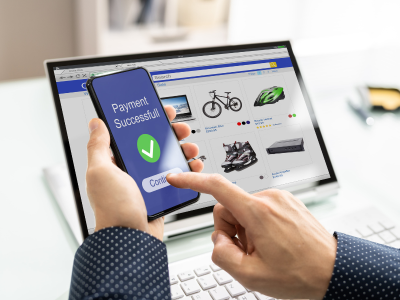
Building an ecommerce app is a thrilling journey filled with choices, and one of the most critical decisions you’ll make is selecting the right tech stack. Think of your tech stack as the backbone of your app – it determines how smoothly your app runs, how scalable it is, and even how much time and money you’ll need to invest in development. Sounds like a big deal, right? Let’s explore this topic together!
What is a Tech Stack?
Before diving into the details, let’s clear something up – a tech stack is not as complicated as it sounds. It refers to the combination of technologies, programming languages, tools, and frameworks that developers use to build an application.
Think of it as putting together a team for a project – your tech stack is your “dream team” of software components, with each part playing a specific role:
- Frontend: What your users see and interact with – buttons, images, text, etc.
- Backend: The engine working behind the scenes – handling databases, user authentication, and the app logic.
- Database: Where all your app’s data (products, user profiles, order info) is stored.
Key Considerations for Choosing Your Tech Stack
Making the best choice for your ecommerce app’s tech stack requires a little planning and a lot of clarity about your app’s goals. Here’s what you need to think about:
1. Scalability Needs
Do you aim to grow your ecommerce app into a platform for thousands (or millions!) of users? Then you’ll need a stack built for scale. Popular backend frameworks like Node.js or programming languages like Python are great options for creating apps that can grow effortlessly.
2. Speed and Performance
In ecommerce, every second counts – literally! If your app is slow, users are more likely to leave than complete a purchase. Using tools like React.js or Vue.js for the frontend helps you create apps that load quickly and offer a buttery-smooth experience.
3. Budget-Friendly Options
Limited budget? No problem! Open-source solutions, such as WooCommerce (PHP) or frameworks written in Ruby on Rails, can save you lots of money while still delivering excellent results.
Popular Tech Stacks for Ecommerce Apps
Here’s a quick list of tried-and-tested tech stacks and what makes them shine:
- MEAN Stack: MongoDB, Express.js, Angular, and Node.js – perfect for full-stack JavaScript apps.
- LAMP Stack: Linux, Apache, MySQL, PHP – a classic that’s still powerful and reliable.
- MERN Stack: MongoDB, Express.js, React, and Node.js – perfect for modern, responsive web apps.
Pro Tips for Smooth Development
- Stay Future-Focused: Choose tools that don’t just meet current needs but can evolve with your business over time.
- Consider Developer Expertise: It’s always easier (and faster) to work with technologies your dev team knows inside-out.
- Prioritize Security: With sensitive payment info involved, pick technologies with a strong security reputation.
Balancing User Experience and Functionality in Ecommerce Apps
When it comes to creating a successful ecommerce app, finding the perfect balance between user experience (UX) and functionality is crucial. Think of it this way: your app might be packed with high-end features, but if users find it clunky or confusing, they’ll drop off faster than they came. On the flip side, a super sleek design without practical features can leave users frustrated. So, how do you strike that magical equilibrium? Let’s dive in!
Focus on Your Users First
It’s no secret: your app is built for your users. So every decision should begin with their needs and preferences in mind. Start by asking:
- What devices are they using to shop?
- What are their shopping behaviors and goals?
- How can your app make their lives easier?
Through user research, collecting feedback, and analyzing data, you can create a roadmap that puts them first.
Seamless Navigation is Non-Negotiable
Here’s the deal: nobody wants to hunt for the “Add to Cart” button or puzzle over how to find product categories. Ensure your app’s navigation is as simple as flipping through a magazine. Follow these golden rules:
- Keep it intuitive: Users should know exactly where to go with minimal thought.
- Include a search bar: A prominent, efficient search tool can work wonders for users looking for specific items.
- Use clear call-to-action buttons: Think “Buy Now,” “Add to Cart,” or “Check Out” – these should stand out and guide the user’s journey.
Speed is King
No one has the patience for slow-loading apps, especially in ecommerce where impulse shopping is common. Research shows that users abandon apps or websites that take more than three seconds to load. Ensure your app runs lightning fast by optimizing images, using caching tools, and minimizing server requests. Also, regularly test and fine-tune performance to maintain speed across devices and platforms.
Keep the Design Clean and Accessible
Simplicity is your secret weapon when balancing UX and functionality. Avoid overcrowding your app with excessive elements or overly complex visuals. Instead:
- Stick with a minimalistic design that aligns with your branding.
- Use accessible fonts and contrasting colors to cater to users with visual impairments.
- Ensure the layout is responsive so it looks stunning on screens of all sizes.
Tie in Functionality Without Overwhelming Users
Sure, offering innovative features in your ecommerce app is appealing, but avoid going overboard. Prioritize features that enhance the shopping experience, such as:
- Personalized recommendations: Use AI to suggest items users will love, based on their preferences.
- Multiple payment options: From digital wallets to credit cards, more choices = happier users.
- Push notifications: But use them wisely! Notify users of sales, but don’t spam.
Testing the Balance
Once you think you’ve nailed the balance, test it. Use A/B testing to see which design or feature configurations resonate best with users. Remember, user needs evolve, and so should your app. Always remain open to updates and tweaks to keep the experience fresh and functional.
Reducing Development Costs Without Compromising Quality

So, you’re delving into the exciting world of ecommerce app development, but you’ve likely hit a common speed bump: how do you reduce costs without cutting corners? It’s not just about spending less; it’s about making smart choices that let your app shine without ballooning your budget. Let’s break it down together!
1. Start with a Clear Plan – No Guesswork Allowed
Think of your ecommerce app like a journey. If you set off without a map, there’s a good chance you’ll get lost and waste valuable resources trying to course-correct. A detailed plan ensures you focus on what matters most.
- Define your audience clearly: Who are they? What features are non-negotiable for them?
- Prioritize essential features: Focus on your app’s MVP (Minimum Viable Product) to ensure you’re building only what you need first.
- Create a clear roadmap: Outline your project timeline, including deadlines and milestones, to keep everything on track.
The more clarity you have up front, the less money you’ll waste going back and forth between ideas.
2. Leverage Open Source Tools and Frameworks
Here’s some great advice: don’t reinvent the wheel. Modern app development offers a treasure trove of open-source tools, libraries, and frameworks that are reliable and budget-friendly.
- Consider frameworks like Flutter or React Native for cross-platform compatibility. One codebase = fewer development hours = lower costs.
- Look for open-source ecommerce platforms (like Magento or WooCommerce) that can integrate with your app for backend flexibility.
- Use pre-existing APIs for payment gateways, shipping solutions, and user authentication.
Leveraging open-source tools not only cuts costs but accelerates the development timeline, which means your app gets to market faster!
3. Outsource Wisely Without Compromising Expertise
Hiring a local team can be costly, but outsourcing to developers overseas can save you big bucks—if you do it thoughtfully. Here’s how to ensure quality isn’t sacrificed:
- Vet your developers thoroughly. Check reviews, portfolios, and references to confirm they have the skills you need.
- Start with smaller projects or tasks to test their abilities and communication skills.
- Select developers in regions with a strong reputation for IT skills, like Eastern Europe or South Asia.
- Set clear expectations and maintain open, regular communication to avoid misunderstandings.
Remember, outsourcing doesn’t mean handing over your project blindly—it’s still your baby. Stay involved!
4. Go Cloud-Based for Cost Efficiency
Hosting your app infrastructure in the cloud (using services like AWS, Google Cloud, or Azure) allows you to pay for resources as you need them, rather than maintaining costly servers. Plus, cloud solutions scale beautifully when your app grows, meaning you won’t face sudden, hefty bills.
5. Don’t Skimp on Testing, But Automate Where You Can
You may be tempted to rush through testing to save money, but trust us, catching bugs post-launch will cost you exponentially more. Instead, consider automating parts of your testing to save time and resources:
- Use tools like Selenium or Appium for automated testing.
- Combine automated testing with live user feedback for well-rounded quality assurance.
Automation keeps your app polished and professional without burdening your budget.
6. Recycle Code and Use Pre-Built Modules
If this isn’t your first app, recycle code snippets or modules from your previous projects (or open-source repositories). Pre-built modules for login systems, push notifications, or search functionalities can drastically reduce development time and costs.
7. Monitor and Adjust Costs Regularly
Finally, economics 101: keep track of your expenses! Use budget management tools to monitor where your money is going and identify opportunities to streamline costs without hurting the app’s functionality or performance.
Reducing ecommerce app development costs doesn’t mean sacrificing quality. With smart planning, leveraging tech tools, and keeping practicality in mind, you can launch an impressive app without blowing through your budget. Remember, it’s all about working smarter, not harder!
Maximizing Business Efficiency Through Smart Integrations
Ecommerce apps are no longer just digital storefronts – they are bustling hubs of activity, handling everything from customer transactions to inventory management. Smart integrations can transform your app into a streamlined, powerhouse operation, saving time, boosting efficiency, and providing a fantastic user experience. Let’s delve into the most impactful integrations that can give your ecommerce business an edge.
1. Payment Gateways: Easy and Secure Transactions
One of the non-negotiables for any ecommerce app is a seamless and secure payment gateway integration. Customers want easy checkout experiences, and providing them with multiple trusted payment options like PayPal, Stripe, or Apple Pay can be a game-changer. Security protocols such as PCI-compliance and fraud detection layers are also must-have features to build trust and avoid processing hiccups.
2. Inventory Management Tools
If your inventory isn’t in sync with your sales, things can quickly spiral out of control. Integrating real-time inventory management systems like TradeGecko or Zoho Inventory ensures your app reflects accurate stock levels, reducing the chances of customer frustration or order cancellations due to out-of-stock items. These tools empower businesses to monitor product flow efficiently while avoiding overstock or shortages.
3. Customer Relationship Management (CRM) Systems
When you integrate a CRM like Salesforce or HubSpot with your ecommerce app, you get access to an array of customer data. This helps you tailor promotions or email marketing to specific customer segments, answer queries faster, and build long-term loyalty. A strong CRM system is essentially your best friend for improving engagement and understanding what your customers truly need.
4. Shipping and Order Tracking Integrations
No one likes to play the “Where’s my package?” game! Shipping integrations, such as ShipStation or AfterShip, allow real-time order tracking and automated notifications, giving users clear visibility over their shipments. Moreover, these tools often streamline international shipping or returns, adding an extra layer of efficiency to your business operations.
5. Marketing Automation
Why spend hours manually launching campaigns when email marketing and advertising tools like Mailchimp, Klaviyo, or even Google Analytics integration can handle it for you? These integrations ensure cohesive and timely communication with customers while tracking your campaign performance to measure ROI.
6. Social Media Integrations
Want to make your platform truly interactive? Social media integrations let you connect your ecommerce app directly to Facebook, Instagram, and Pinterest for seamless shopping experiences or promotions. Additionally, users can share their favorite products with one click, amplifying your reach organically through word-of-mouth and recommendations.
7. Analytics and Business Intelligence
To make informed decisions, businesses need meaningful insights from their ecommerce data. Integrating tools like Google Analytics, Mixpanel, or Hotjar can track user behavior in your app, identify bottlenecks, and reveal potential areas for optimization. Informed decisions = better outcomes!
8. Chatbots and AI Support Systems
Integrating AI-powered tools like Zendesk or Intercom ensures 24/7 customer support. Chatbots can handle FAQs, assist with transactions, and even upsell – all while providing efficient customer service without needing a human intermediary for every interaction.
Ready, Set, Launch: The Key Steps to Testing and Launching Your Ecommerce App
You’ve poured your heart, soul, and countless hours into developing your ecommerce app, and now it’s time to show it off to the world. But before the big launch day, hold your horses! A smooth rollout doesn’t happen by accident—it takes careful planning, rigorous testing, and a sprinkle of patience. Let’s dive into how you can ensure your app is all set for a grand debut.
1. Start with Thorough Testing
Testing isn’t just a box to tick—it’s one of the most critical phases before launching your app. Think of it as quality control; you don’t want your users stumbling upon frustrating bugs or performance hiccups.
- Functionality Testing: Ensure every button, feature, and process does exactly what it’s supposed to. Double-check the shopping cart, payment gateway, and search functionalities—it’s all about seamless user experience.
- Performance Testing: Test how your app performs under different conditions. Will it stay snappy and responsive if there’s a surge of users or high traffic?
- Compatibility Testing: Test your app on various devices, screen sizes, and operating systems. Whether it’s iOS or Android, smartphones or tablets, compatibility is non-negotiable.
- Security Testing: Assure your users you value their trust by safeguarding their data. Invest effort in testing for vulnerabilities in your app’s authentication, payment processing, and data storage features.
Pro Tip: Involve real users for beta testing. They might notice things you’ve overlooked, helping you fix potential pain points before they go public.
2. Prepping for the Launch
So, your app is bug-free and ready to roll. What’s next? Pre-launch prep! Think of this as laying the runway for your ecommerce app to take off smoothly:
- Build up the Hype: Use email campaigns, social media teasers, and engaging content to create buzz before your app hits the app stores. Get your audience excited about what you’ve built.
- Choose the Right Launch Date: Timing is everything. Be mindful of holidays, industry trends, and even competitor activities when picking a launch date.
- Prepare Your Support Team: Be ready for questions, feedback, and, yes, potential challenges as users start interacting with your app. A responsive customer support team can turn frustrated users into loyal customers.
3. The Launch: Smooth Sailing or Stressful Storm?
The day has arrived—your app goes live! To ensure a smooth launch:
- Monitor your app’s performance closely. Keep an eye on traffic, crash reports, and user feedback during the initial days.
- Be agile. If issues arise (and they might), have your developers ready to deploy quick fixes and updates.
- Engage with Users. Respond to reviews and comments in app stores. Show your users you care about their experience, and build rapport from day one.
4. Post-Launch: Keep Iterating
Launch isn’t the end; it’s just the beginning. Use analytics to monitor how users are interacting with your app. Are they abandoning carts? Struggling with navigation? Look for opportunities to enhance the experience. Regular updates and added features based on user feedback can keep your app fresh and engaging.
Final Thoughts
Launching an ecommerce app might feel like walking a tightrope—it’s exciting yet nerve-wracking. But with thorough testing, careful preparation, and a commitment to listening and adapting, you’re setting yourself up for success. Remember, perfection is a journey, not a one-time event. Celebrate the milestones and keep evolving!

